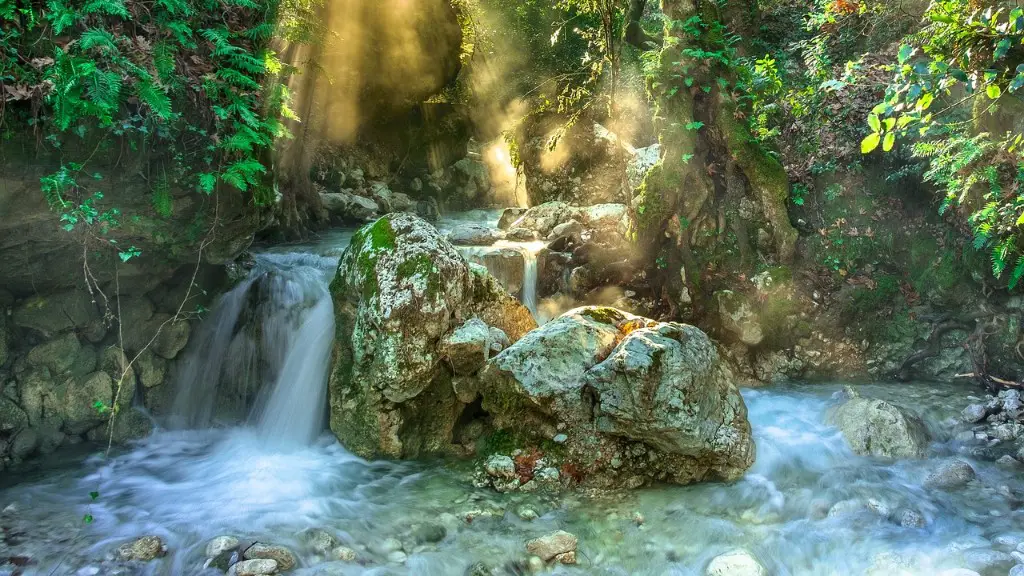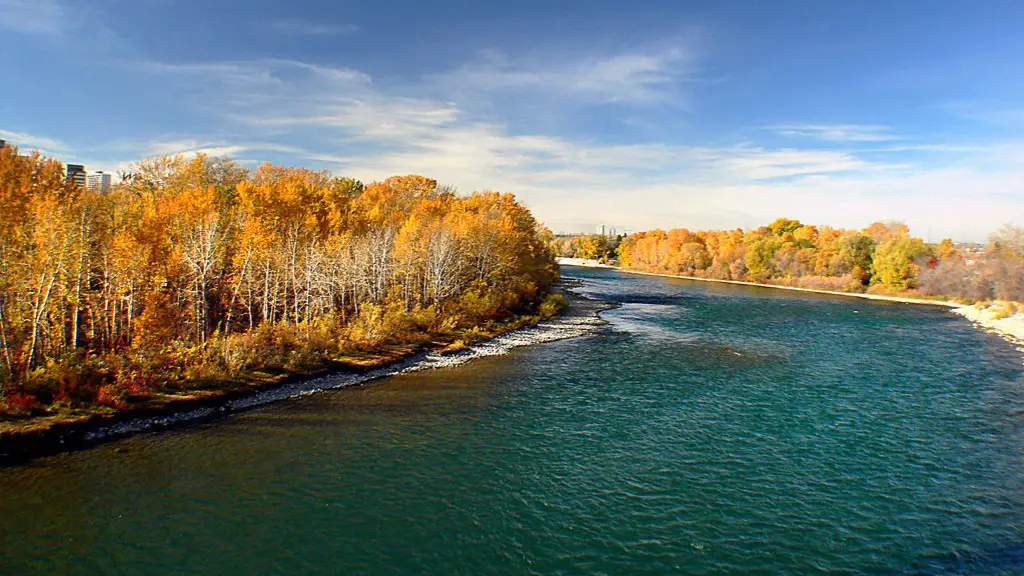The Yangtze River, known in Chinese as the “Chang Jiang” (长江) is the longest river in the nation and in the whole of Asia. It is the third-largest river in the world, after the Nile in Africa and the Amazon in South America. Spanning an impressive 4,900 kilometers (3,000 miles) in length, the Yangtze River is one of China’s most important commercial and strategic resources.
The Yangtze River originates in southern Qinghai Province, flows through the middle of China, nourishing the 12 provinces in Central and East China. After reaching Wuhan it is divided into two branches near the Three Gorges, before entering the East China Sea at Shanghai. It passes through the lush area of the Three Gorges, an area renowned for its beauty not only in China but also worldwide. In addition, the Yangtze is an artery that transports huge amounts of goods to industry hubs throughout the country.
The Yangtze River is seen as the lifeblood of numerous cities and is the main source of fresh water for millions of people, from mega cities such as Shanghai, to smaller municipalities along the way. The Yangtze provides irrigation for countless farms and land, helping to cultivate crops and livestock. Furthermore, it serves as a major waterway used by ships to transport goods, yet can also be dangerous to navigate due to its swift currents, flooding and debris that sometimes float downstream.
In exploring the rich cultural history that theYangtze River has played a role in, one quickly discovers that this waterway has had a profound impact on many aspects of Chinese life. It is no exaggeration to say that the river has influenced literature, art, music, architecture, and much more in the land of China. Indeed, it has even been the subject of ancient poems and folkloric stories, some of which have survived to this day.
The Yangtze River system is characterized by a wide range of geological features. Here, diverse ecosystems unfold along a gradient of wet and dry habitats, and the Yangtze is home to numerous endangered species including the Chinese alligator, Chinese giant salamander, grey snub-nosed monkey, and the Asian giant softshell turtle. It has a significant influence on China’s climate, and its waters are becoming especially important due to its impact on flood control and irrigation.
In recent years, the Chinese government has taken multiple efforts to make use of the Yangtze’s potential. Projects such as the Three Gorges Dam, the Xiling Gorge Hydroelectricity Station, and the Snow Mountain-Yangtze River Irrigation System have all been created to secure these goals. With these new projects, the Chinese government hopes to build a stable, prosperous and sustainable society for its citizens.
Environmental Impact
Unfortunately, the Yangtze River faces increasing pollution and ecological threats. Millions of tons of pollutants are discharged into the river every year, and it is estimated that 1,000 tons of garbage are thrown into the Yangtze every day. This has led to an increase in toxins, which has affected water quality, fish productivity, and aquatic plants in the lower reaches of the river. In addition, deforestation and soil erosion have caused more sludge and sediment to be discharged into the river, resulting in an increase in water turbidity. This threatens the livelihood and welfare of those who rely on the river for their water source. China hopes to create a pollution prevention and control plan to protect the Yangtze using advanced technologies and scientific management.
Protection and Sustainability Programs
Considering the importance of the Yangtze River to the nation’s economy, the Chinese government has implemented a number of conservation and restoration programs, with the aim being to ensure the long-term sustainability and protection of the Yangtze environment. These include the Yangtze River Economic Belt (YREB), the natural ecological zone protection program and the East Asia flyway network.
The YREB is a government policy initiative implemented in 2018. This initiative organizes the economic development of the relevant provinces and cities along the Yangtze River into three major categories — ecological protection and high-quality development, the promotion of industrial upgrading, and the building of a digital and smart Yangtze River Economic Belt.
The natural ecological zone protection program is an important strategy for restoring the rivers and lakes in the Yangtze River basin. It was first introduced in 2008 as a response to ongoing water pollution and resource damage. The plan focuses on reducing the sources of pollution, restoring water quality and increasing the quality of water resources.
The East Asia flyway network is a network of protected areas and sites along the Flyway, providing crucial stopover, migratory and wintering habitats for migratory waterbirds. This network was established in 2007, and since then it has been working to research, protect, monitor and manage natural wetland, including the wetlands of the Yangtze River.
Future Outlook
Despite the challenges of erosion, pollution, and unsustainable development, the Yangtze River is still a vital source of life and prosperity in China. Through improved protection, management and restoration efforts, China is making strides towards a healthier, more sustainable river system.
The Chinese government has made the conservation of the Yangtze River a priority. This includes the implementation of rigorous standards for the assessment and taxation of polluting industries, the introduction of regulations to prevent illegal fishing activities such as trawling and the adoption of programs to restore and manage endangered habitats.
The Chinese government is working to shift from a development model that prioritize short-term gains to a long-term vision that emphasize sustainability and ecological protection. This is essential for the protection of the Yangtze River, and the realization of its potential for economic, social, and environmental well-being in China.
Nature Reserve
The Yangtze River Nature Reserve is the largest nature reserve in China, covering an area of 22,250 square kilometers. It contains a rich array of habitats, including wetlands, grassland, rivers and lakes, and is home to a number of endangered species. This reserve includes the Three Gorges National Park, the largest of its kind in the country, and is the first of its kind in the Yangtze River region to be included in the UNESCO World Heritage site list.
The Three Gorges Nature Reserve provides important environmental services, such as protecting the water quality of the Yangtze River and preserving its biodiversity. It also plays an important role in maintaining soil fertility and organic matter, providing food and energy to local communities, and supporting traditional cultures. In addition, it helps to protect the upper and middle reaches of the Yangtze River from floods and erosion.
In the coming years, the Chinese government will continue to work towards the protection and sustainable development of the Yangtze River Nature Reserve, through further legislation and implementation of programs. This includes the establishment of a regional Monitoring and Evaluation Program for the Three Gorges National Park, the promotion of eco-tourism, and the protection of endangered species.
Tourism
The Yangtze River is one of the world’s most popular tourist destinations, attracting millions of visitors every year. Tourists come to marvel at the majestic views of the Yangtze River and explore its unique eco-systems. Cruises along the river are popular, as are river-rafting and fishing trips, while many come just to admire the river and its culture.
In recent years, the Chinese government has made efforts to promote tourism along the Yangtze, creating numerous national and provincial scenic spots. These include nature reserves, parks and other attractions such as temples, museums and botanical gardens. In addition, a number of private and international operators offer cruises and excursions on the river.
The Yangtze is an important economic cornerstone in China, and its value has now extended beyond the traditional economic sectors. Tourism has become an important industry, providing employment and income for many rural communities and contributing to the local economy across the nation. This is not only beneficial for the nearby communities, but also for China as a whole, as tourists bring foreign capital and cultural exchange.
Conclusion
The Yangtze River has been an integral part of Chinese life for centuries, playing a crucial role in promoting economic and social development, and providing essential natural resources for the nation. It is the nation’s longest river and the third-largest in the world, and has become a major tourist hub, hosting millions of visitors every year. Despite industrial and environmental challenges, the Chinese government is taking steps to protect the Yangtze, so as to ensure a sustainable future for the lifeblood of the nation.





